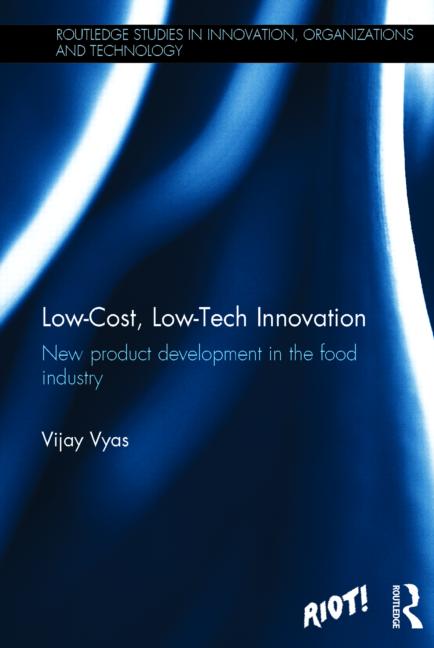SPIRIT OF INNOVATION AWARDS | 2004 RETAIL WINNERS
Spirit of innovation awards: retail
The Italian Job

Since venturing into the crowded U.S. pasta market in 1996, Barilla (Parma, Italy) has survived a rapidly thinning, but still viable, dry pasta market valued at $1.1 billion. The company has even managed to stake a claim in the larger sauce arena, valued at a little over $1.4 billion in retail sales. With its latest pasta sauces, the company and its developers have taken the prepared sauce category another step closer to fulfilling its promise of authentic Italian cuisine.
Indeed, Americans' fascination with Italian culture, cooking and lifestyle has been the driving force behind Barilla America Inc.'s (Bannockburn, Ill.) marketing efforts. These include television ads touting its products as “the choice of Italy” and interweaving Italian imagery, often boiling down to 30-second romances set to vocals by tenor Andrea Bocelli.
With Restaurant Creations, Barilla's new line of authentic Italian sauces, the company ventures into premium sauce territory. The products boast such quality ingredients as olive oil, herbs, basil and nuts, yet they maintain a price point at roughly the same as competitors. In fact, Greg Wozniak, senior brand manager with Barilla America, opines the chefs and developers at Barilla have delivered an authentic product “superior to super-premium sauces marketed by restaurants and retailing for more than twice the price.”
However, for Barilla, the most important factor in developing the Restaurant Creations products was delivering on the company's goal of authentic Italian cuisine. Working with innovative chefs, R&D personnel, marketing and sales teams, as well as contributions from a variety of other sources, Barilla's new line benefited from more than the company's American resources. The Parma, Italy facilities also proved instrumental in delivering the new product to market.
As Judy Glass, Barilla's manager of product development, recalls, “Not only was the development cross-functional, it was across each of Barilla's facilities. There were product developers working on it in Italy, and there were product developers working on it here--consumer insight people there and here, technical people, supply chain and logistics, everybody really working cross functionally, packaging people there and here.”
At first glance, that packaging element captures the attention. Two glass jars surrounded by a sleeve may appear a novelty, but the concept is crucial to delivering what Barilla promises is authentic Italian cuisine.

Jar Heads
Though the dual-jar concept added a degree of complexity to the process, Wozniak believes this helped as well. It allows Barilla to maintain the freshness and taste of the “chef's recipe” in the top jar until the consumer is ready to eat.“Actually, the idea of separating the jars was part of the design of what we wanted to do,” remembers Glass. “We wanted to deliver and basically design these recipes and products to retain the integrity of the product until the exact moment when the consumer puts the two together, when they actually create it, very similar to how a chef prepares a recipe in a restaurant. These chefs will not add their herbs and spices until the last moment. The idea of the two separate jars is to maintain the delicate individual flavors so that, at that magic moment, it helps create a pasta sauce with the freshest taste, as would be found in the finest restaurants in Italy. That was really the premise: How to deliver restaurant quality? Well, clearly, Barilla would have to put it into two separate jars, so that the final moment is when it would all come together.”
Theoretically, the separate-jar concept also would allow the consumer to add only a portion of that additional ingredient, thereby giving the consumer the feeling of actually creating a recipe. However, Glass notes that the amount of ingredients in the top jar is at a perfect ratio for the base sauce in the bottom jar. Besides, as she notes, “In a restaurant, the consumer wouldn't request only a part of the sauce. We have designed it and spent quite a while working on the appropriate ratios of the top to the bottom, and this is what we have determined to be exactly what the consumer is looking for.”
Simply put, the separate jars were important to developers because, if the two elements (the chef's recipe and the base sauce) were mixed and then bottled, Barilla would not be able to deliver the same product performance across all three of the Restaurant Creations varieties. While the base sauce is the same for each of the three, the chef's recipe (in the top jar) varies, with each reflecting the ingredients and cuisine of a particular region of Italy:
Sugo alla Romana, featuring a chef's recipe blending Romano and Ricotta cheeses, olive oil and nuts, is a result of Lazio influences, most closely associated with Roman cuisine.
Sugo alla Genovese boasts a pesto combining basil, Parmesan cheese, olive oil and nuts. Small-leafed basil is a hallmark of the Liguria region, and of Genova's famous pestos--a smooth sauce created by grinding basil, olive oil, garlic, nuts and cheese.
Sugo alla Napoletana includes a mixture of tomatoes, onions, olive oil, red wine, garlic and herbs. The Campania region is well known for its tomatoes and other vegetables that grow in its fertile volcanic soil, and which often find their way into the restaurants of Naples.
After two years of development, Barilla believes Restaurant Creations fulfills the company mission: bringing authentic Italian food items to the U.S. and, while the result echoes that mission, it also follows closely along with another important component of Barilla's team, the consumer research division. Research in the U.S. found that Barilla's sauce consumers frequently referred to their travels to Italy and great food experiences in restaurants, often regarding Italy as the “gold standard for food and lifestyle,” says Wozniak. Those opinions, and the desire to bring such a restaurant experience into the home, prompted Barilla to set its developers in motion to create the Restaurant Creations line.
That process would grow to entail an entire cross-functional team effort, all with the same goal in mind: the company's mission to deliver authentic Italian food items with a degree of convenience. Barilla concedes, however, that the convenience factor is not a driving force for the product. In fact, it is an element that is downplayed, as the company recognizes that, right or wrong, consumers typically relate convenience with a lower-quality product. As such, Barilla is focusing on the end product, the result of hour upon hour of development, at facilities thousands of miles apart. The company strives to deliver authentic Italian cuisine because, as Wozniak relates, “At the end of the day, if consumers can emulate Italian chefs at home, that is a great benefit.”
Sidebar 1:
Honorable Mention -- Retail
Masterfoods USA: Snickers Marathon Energy BarsRecognizing an opportunity is essential to new product development, Masterfoods USA (Hackettstown, N.J.) certainly seized upon one with the launch of Snickers Marathon energy bars. Noting the double-digit annual growth of the energy bar category and a market size of greater than $1 billion, Masterfoods realized the category had a household penetration of only 15%.
The company's developers set about creating an energy bar offering competitive nutritional credentials while--at the same time--delivering a breakthrough taste that could attract those 85% of households not currently purchasing energy bars. Masterfoods' consumer research confirmed taste was the number-one barrier for non-users and that even current users were seeking the best-tasting offerings. R&D personnel then utilized formulation techniques and proprietary processing capabilities to deliver a range of energy bar choices, many of which are still on the horizon. The next few years, Masterfoods promises, will see the Marathon line grow to include high-protein, low-carb and other sub-lines.

Sidebar 2:
Honorable Mention -- Retail
HP Hood: Carb CountdownDairy Beverage
In developing the Carb Countdown dairy beverage line, HP Hood's (Chelsea, Mass.) team benefited from the company's proprietary low-carbohydrate and ultra-filtration dairy technologies, but the product development actually entailed far more. The company's first national product line, Carb Countdown, required an increase in production and distribution capabilities, yet the most difficult task may have been acquiring the Atkins label on its carton to appeal to the carb-conscious masses.
Atkins Nutritionals (Ronkonkoma, N.Y.) long has been synonymous with low-carb dieting for many consumers, but securing the license to use the Atkins label on products has proven troublesome for numerous companies. HP Hood's team met this challenge, enabling a launch of the only line of Atkins-approved refrigerated dairy beverages.
Looking for a reprint of this article?
From high-res PDFs to custom plaques, order your copy today!







